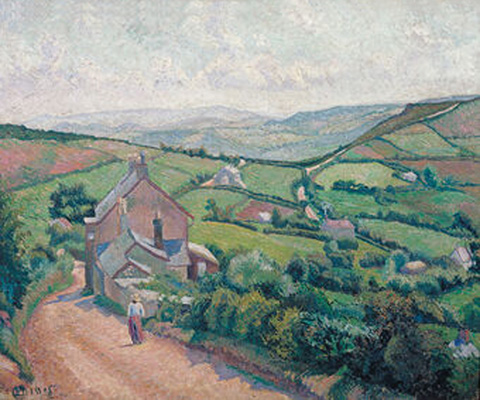“One of the Ruins that Cromwell knocked about a bit” – “Abaht a bit, Abaht a bit”. This was a music hall song heard on the radio about 50 years ago, sung in a mock cockney voice. From memory it referred to a woman, knocked about by her fellow. However of course the phrase came from descriptions of large buildings, now ruined. These were castles or country houses belonging to Royalists which held out against the Protestant armies of Oliver Cromwell and were “slighted” (partially destroyed) to prevent further defence in the Civil War. Corfe Castle is an outstanding Dorset example. The Civil War lasted from 1642 to 1649. It set family members against each other and destroyed much property.
The reasons for the Civil War were largely because of high taxation imposed by King Charles I, but also exacerbated by poor harvests and the plague. In addition religious differences between Protestants, extreme Puritans and Catholics were seething below the surface. Cromwell was not originally the Parliamentarian leader, but his organising and tactical abilities brought him to the top. He arrived in Dorset in 1645 after fighting in the south and east of England.
Beaminster, Bridport, Dorchester, Lyme Regis, Melcombe Regis, Poole and Wareham favoured the Parliamentarians whilst Blandford, Corfe Castle, Portland Castle, Sherborne Castle and Weymouth were royalist strongholds. So the county was divided, as was the country.
Seaports were prized by both sides to bring in reinforcements. The royalists hoped for reinforcements from Europe. Lyme Regis was well known for its trade in wool with France, so the royalists wished to capture it and besieged it for eight weeks in 1644. Prince Maurice and his royalist troops had fired Beaminster in April, and then came to Lyme Regis. They were faced with a trench and rampart six feet high and a mile long surrounding the town, and about 1,000 people inside. Both sides fired their cannon. On Sunday 28th April Maurice made a major attempt to storm the town, which was ineffective, many of his force being conscripts. They used 200 barrels of powder but apparently only killed one man and lost over 60 men themselves. They tried shooting fire arrows but with little effect. The garrison counter attacked aided by 100 men from ships, and blocked several royalist guns. On 6th May Maurice waited all day in a thick fog until 7 pm when the defenders had supper, before attacking, but was repulsed with losses. Maurice then moved his artillery to the west of the town to cover the harbour. He managed to sink a supply boat and barges in the harbour on 22nd May. The next day the parliamentarian Earl of Warwick arrived with eight ships and 36 barrels of powder. His sailors donated their own clothing and food. The royalists intensified their bombardment of harbour and town, causing some losses.
On the 28th May the Earl of Warwick sent in 300 seamen as reinforcements. The royalists renewed their attack with hand to hand fighting. One seaman called Moizer stood in the centre holding the colours aloft, until some of his fingers were shot off. This rallied the defenders. The women of Lyme brought powder and bullets, despite the danger and encouraged their menfolk. Some were said to have worn men’s clothes to suggest there were more defenders, and shot muskets at the royalists. One young woman had her hand shot off, but declared she would also lose her life if necessary, in the cause of liberty. They also rolled stones down onto attackers climbing the ramparts. There were a number of Puritan preachers in Lyme who exhorted the defenders to greater efforts. The royalists used fire arrows to burn up to 30 houses before the wind changed. Later they used red hot bullets, one of which set fire to an ammunition store. The fire fighters, many of them women, brought the fires under control. The siege was a disaster for the royalists. The disheartened royalists began to leave on 14th June. About five days later Warwick and his fleet also left for Weymouth.
Lyme had lost 120 men. The royalists lost a probably exaggerated figure of over two thousand casualties. When the royalists attacked Dorchester, women there followed the example of Lyme. The anniversary was celebrated at Lyme until the Restoration and in 1648 the town received 2,000 oak trees to rebuild houses and ships.
Much of the detail of this article is based on Dorset in the Civil War by Tim Goodwin. A Community Play based on the women in the siege of Lyme was produced there in 1984 by Ann Jellicoe.
Bridport History Society will have a talk about “The History of Weymouth” on April 14th at 2.30 pm in Bridport United Church Main Hall. All welcome, visitors entry £2-50.
Cecil Amor, Chairman, Bridport History Society. Tel : 01308 456876.









